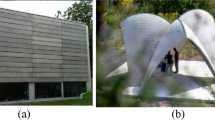Abstract
It was investigated whether there was a potentially significant improvement to scarf joint bonding that was achieved through the dispersion of carbon nanotubes (CNTs) along the interface of the composite joint. The study examined various factors that might affect CNT-reinforced joint interface strength. Each composite joint consisted of a vinyl-ester matrix base (DERAKANE 510-A) interlaced with a carbon fiber weave (TORAY T700CF). During the curing process, the research explored several variables concerning the CNT application. The testing included single-walled CNTs (SWCNT), and conventional and bamboo-structure multi-walled CNTs (MWCNT) with varying length, purity, and concentration levels along the surface area of the joint interface. This wide array of data demonstrated the effect of CNTs introduction at the joint interface, and provided the ideal type, size, purity level, and concentration level for composite scarf joint bond reinforcement using CNTs. Furthermore, a computational model was developed to predict the strength of the scarf joints. The predicted model agreed well with the experimental data.











Similar content being viewed by others
References
Mouritz AP, Gellert E, Burchill P, Challis K (2001) Compos Struct 53:21. doi:https://doi.org/10.1016/S0263-8223(00)00175-6
Thostenson ET, Ren Z, Chou T (2001) Compos Sci Technol 61:1899. doi:https://doi.org/10.1016/S0266-3538(01)00094-X
Cadek M, Coleman JN, Ryan KP, Nicolosi V, Bister G, Fonseca A, Nagy JB, Szostzk K, Beguin F, Blau WJ (2004) Nano Lett 4(2):353. doi:https://doi.org/10.1021/nl035009o
Schadler SC, Giannaris SC, Aiayan PM (1998) Appl Phys Lett 73(26):3842. doi:https://doi.org/10.1063/1.122911
Cooper CA, Cohen SR, Barber AH, Wagner HD (2002) Appl Phys Lett 81(20):3873. doi:https://doi.org/10.1063/1.1521585
Barber AH, Cohen SR, Wagner HD (2003) Appl Phys Lett 82(23):4140. doi:https://doi.org/10.1063/1.1579568
Lordi V, Yao N (2000) J Mater Res 15(12):2770. doi:https://doi.org/10.1557/JMR.2000.0396
Ding F, Bolton K, Rosén A (2006) J Electron Mater 35(2):207. doi:https://doi.org/10.1007/BF02692437
Greene T (2007) MS Thesis, NPS
Kwon YW (2005) In: Schulz MJ, Kelkar A, Sundaresan MJ (eds) Nanoengineering of structural, functional and smart materials. CRC Press, Boca Raton
Author information
Authors and Affiliations
Corresponding author
Rights and permissions
About this article
Cite this article
Kwon, Y.W., Slaff, R., Bartlett, S. et al. Enhancement of composite scarf joint interface strength through carbon nanotube reinforcement. J Mater Sci 43, 6695–6703 (2008). https://doi.org/10.1007/s10853-008-2689-8
Received:
Accepted:
Published:
Issue Date:
DOI: https://doi.org/10.1007/s10853-008-2689-8




